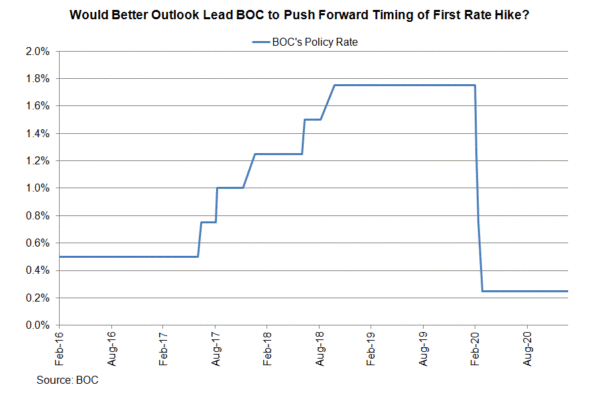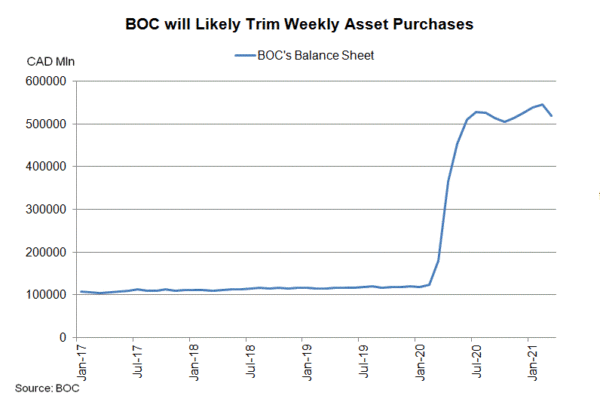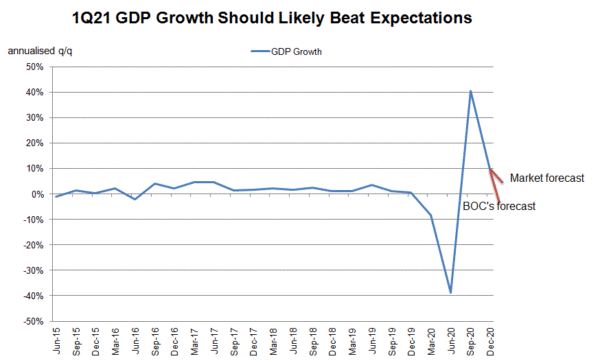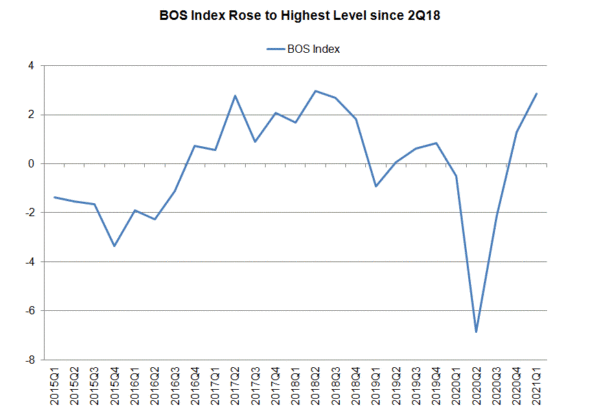We expect the BOC to trim its asset purchases to CAD3B/week, from CAD4B/week previously. The reduction is likely driven by lower issuance by the Treasury. It will, however, leave the overnight rate at the effective lower bound of 0.25%. We also expect the central bank to upgrade the economic projections. With slacks being absorbed earlier than expected, we are interested to see if the members would adjust the forward guidance in light of more optimistic outlook.

Economic data released since the March meeting surprised to the upside. GDP growth accelerated to +0.7% m/m in January, from +0.1% in December 2020. This also beat consensus of +0.5%. The preliminary reading for February was a +0.5% growth. The market forecast that the first growth could reach an annualized +5% q/q, much stronger than BOC’s January’s estimate of -2.5% decline. BOC’s business outlook survey index jumped +1.6 points to 2.9 in 1Q21. The accompanying report suggests that business confidence “strengthened” across “all regions”. Companies’ outlooks for both domestic and foreign demand “improved from low levels a year ago, as most businesses are no longer preoccupied with pandemic-related uncertainty”. Headline CPI for March (due on Wednesday) is expected to accelerate to +2.3% y/y in March, from +1.1% in February.

Against this backdrop, BOC should likely revise higher its economic projections. This could also trigger a tweak in the forward guidance. At previous meetings, the BOC had indicated that the policy rate will stay unchanged “until economic slack is absorbed so that the 2 percent inflation target is sustainably achieved”, and this would unlikely happen until 2023. A better economic outlook could lead the members to see slack be absorbed earlier than 2023.
The major downside risk to the outlook remains the pandemic. Lockdown measures have tightened as the country faces a serious third wave of coronavirus cases. Meanwhile, effectiveness of vaccines in the face of new variants remains in question.












